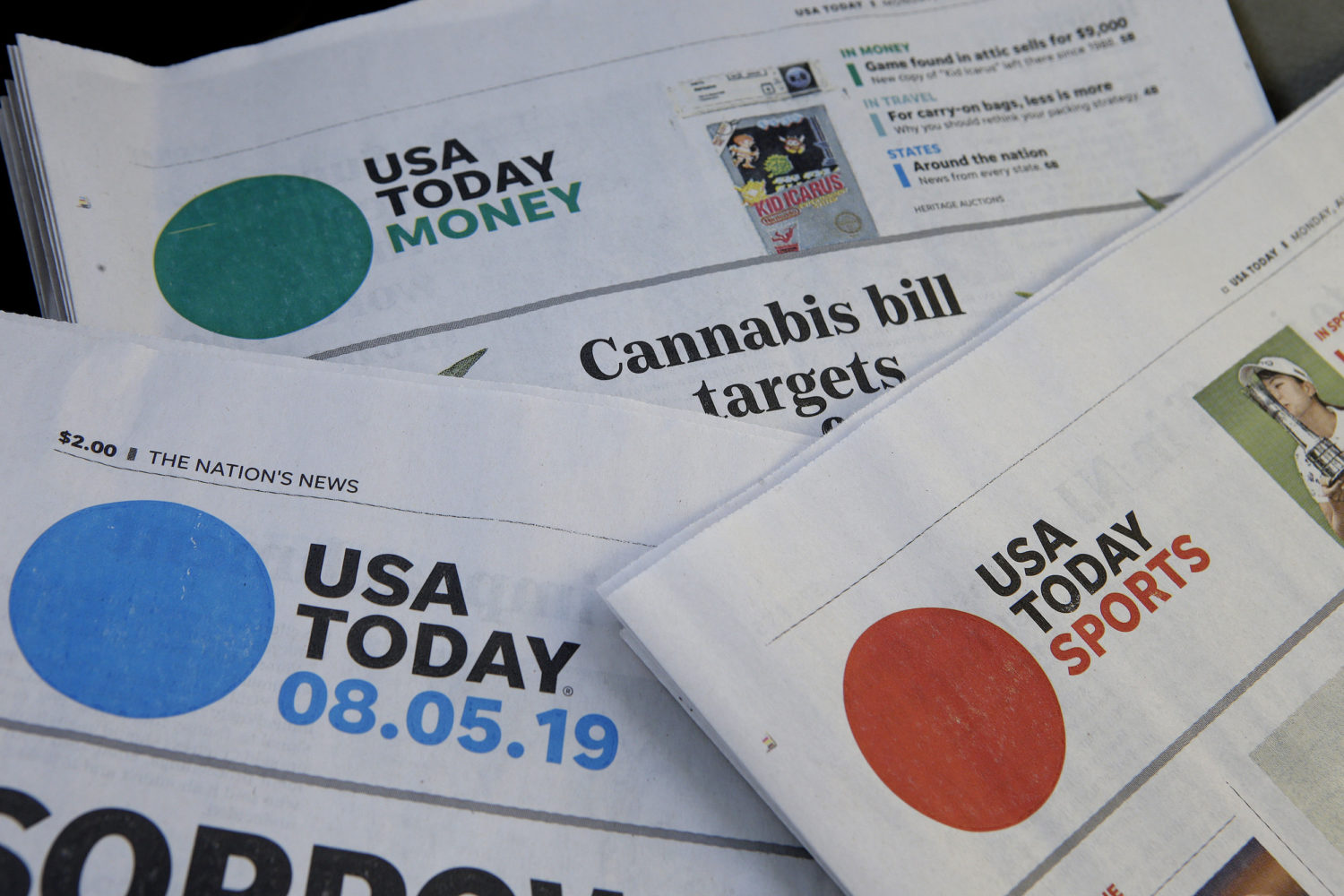This is not Jayson Blair and The New York Times. But it might be the 2020s version of that journalism scandal.
USA Today announced Thursday that it took down 23 stories in which a writer fabricated sources or other information, as reported in The New York Times. Several other stories were altered and the writer’s byline was removed, because smaller pieces of information appear to be fabricated or cannot be verified, USA Today said in its story Thursday.
Perusing a few of the removed articles through internet archives, as well as several articles in which editors have added notes alerting readers that a byline and some information has been removed, it appears the writer was making up sources, like a medical student, a medical doctor or a witness to the recent New York subway bombing.
The New York Times reported that USA Today, which serves as a flagship for the Gannett chain of 250 local newspapers, received a call from an organization saying they had no such affiliation with a source who had been quoted in one of the stories.
That led to an investigation in which the writer, Gabriela Miranda, was found to have engaged in more deception by producing false evidence of her reporting, including an audio recording of the interview, the Times reported.
A source familiar with the investigation told me that it’s possible that Miranda dodged the first complaint with fabricated evidence but was exposed by a second complaint which prompted the investigation.
Articles published in USA Today are often republished in Gannett’s local and regional titles, and vice versa. Miranda’s 23 stories and additional bylines appear to have been removed from those publications, too, accompanied by a note: “This story has been removed from our platforms because it does not meet our standards.”
The newsroom playbook for an editor’s investigation into fabrication or plagiarism was written after Blair was exposed by a similar call to The New York Times, from an editor of the San Antonio Express-News complaining that Blair had plagiarized their work.
Now, when editors get such a call, many of them know the drill.
- First, the editor asks the reporter to explain themselves.
- Then, the editor asks, “If I look through your work, will I find any other issues?”
- Then the editor has the tedious job of looking through every story, searching for key phrases to see if they appear in other publications, and also searching for evidence of the named sources.
Almost always, where editors find one case of plagiarism or fabrication, they find more. I’ve guided editors through this process dozens of times. In the 2000s, it was practically a cottage industry for a journalism ethics expert.
Miranda was assigned to USA Today’s breaking news desk. Most newsrooms have a similar department. Staff are expected to turn stories that are fast and fresh, driving search and social traffic to the site.
“It’s a high expectation job. You have to produce a lot of stories.” a former USA Today staffer told me. “Like with everything, they expect a lot on that team.”
That’s not an excuse, by any means. But it’s not surprising that it would happen. All stories at USA Today are edited before they are posted and this is a reminder to editors to slow down and talk to reporters about their work – mostly because it helps writers grow when they describe their process. But it’s also a good way to nip bad habits in the bud.
In many of the fabrication and plagiarism investigations I’ve helped with, reporters first get sloppy pulling information from Associated Press wire stories into their own work without credit or taglines. In some AP member newsrooms, this practice is technically legal, but it’s intellectually dishonest.
From there, writers sometimes start lifting quotes from expert sources and using the material as if they themselves had interviewed the source. When an editor catches a reporter doing this, I usually encourage them to put a letter in the journalist’s human resources file to put them on notice.
That’s a low-level form of plagiarism, which is copying the exact words of another writer without attribution. Not all plagiarists move on to fabrication, which is making up sources and facts. Stephen Glass of The New Republic was perhaps the most famous fabulist of that era. He preceded Blair by five years. And until Blair became a household name in journalism, Glass was considered a one-off.
Editing writers closely, asking them about how they found their sources and insisting on intellectual honesty are the best ways to both discourage reporters from being dishonest and to catch them when they are.
In light of this case, newsrooms everywhere would be wise to reexamine their editing structures. After Blair, many other cases cropped up because the public was scrutinizing journalism through a new lens. Given the increasing demands of high-production departments, as well as the fact that some journalists hired during the pandemic have yet to step into the office and work with their peers, it’s possible that more cases will come to light.







